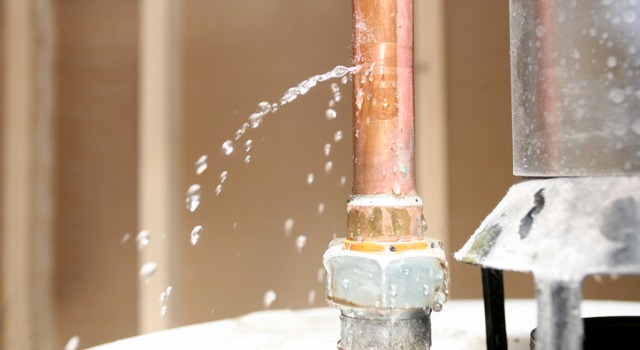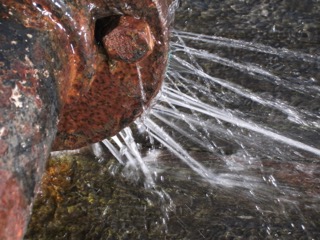Quick Overview: Identifying as well as Repairing Burst Pipes in your house
Quick Overview: Identifying as well as Repairing Burst Pipes in your house
Blog Article
Everybody may have their unique way of thinking in relation to What to Know Before Installing a Dishwasher.

A burst pipeline is a significant emergency; you can only stand as you view water you pay a lot to rejoin with the earth. In worse cases, you see a swimming pool on your kitchen floor, which is a wonderful trip risk, especially if you have youngsters around. If the pipeline that burst remained in your wall surfaces, trouble: you might need to repaint that whole section.
How can a tragedy like a burst pipeline be stopped and managed? Well, by paying attention to your expert emergency plumbers as well as following these rules.
Exactly how do I know when my pipelines have ruptured?
Fluctuating water stress
Pipes do not simply burst in a day. You might have noticed that your kitchen area tap or shower does not run right away when you turn the tap. It may stop for a few secs and after that blast you with even more force than usual.
In various other instances, the water might seem typical at first, after that drop in stress after a couple of seconds.
Damp wall surfaces and water discolorations
Before a pipeline ruptureds, it will leak, the majority of times. If this consistent dripping goes unnoticed, the leak might graduate into a large gouge in your pipe. One simple way to avoid this emergency is to keep an eye out for wet wall surfaces ad water spots. These water discolorations will lead you right to the leakage.
Puddles under pipes as well as sinks
When a pipeline bursts, the discharge creates a puddle. It may show up that the puddle is growing in dimension, and also no matter the number of times you wipe the puddle, in a few mins, there's an additional one waiting to be cleaned. Typically, you might not have the ability to trace the pool to any visible pipelines. This is a sign to call an expert plumber.
Untraceable leaking sounds
Pipeline bursts can occur in one of the most unpleasant places, like within concrete, inside walls, or under sinks. When your house goes silent, you might be able to hear an aggravatingly consistent trickling noise. Even after you have actually examined your shower head and kitchen area faucet, the dripping may proceed.
Dear reader, the leaking might be coming from a pipeline inside your wall surfaces. There isn't much you can do about that, except tell a professional plumber.
Turn off the Water
When water freezes, it broadens in quantity by concerning 9 percent. As well as it expands with incredible pressure: The pressure inside pipes may go from 40 pounds per square inch to 40,000 psi! No pipe can hold that much stress, so it breaks open. The break may occur where the ice forms, but more often, it occurs where water pressure locates a weak spot in the pipe. That might be inches or perhaps feet from the icy location. Discover the water shutoff valve as well as shut off the water to prevent even more damages. You could likewise need to shut down the electricity too, depending upon where the leaks occurs and also just how huge it is.
Polluted water
Many people assume a ruptured pipeline is a one-way electrical outlet. Quite the contrary. As water flows out of the hole or tear in your plumbing system, pollutants locate their method.
Your water may be infected from the resource, so if you can, inspect if your water tank has any kind of issues. Nevertheless, if your drinking water is provided as well as purified by the local government, you must call your plumber right away if you see or smell anything amusing in your water.
What do I do when I identify a burst pipeline?
Your water meter will remain to run also while your water wastes. To reduce your losses, locate the primary controls and transform the supply off. The water pipe are an above-ground structure beside your building.
How to Fix & Detect a Leaking Pipe
How Do I Know if a Pipe is Leaking?
Leak detection tests can help you determine if your pipe has a leak. Even if you don’t see an apparent leak, you should still conduct leak detection tests regularly to save water and money—and prevent major damage to your home.
Water meter. It can be helpful to figure out what your usual water meter usage numbers are and then monitor them regularly. To monitor your meter, first, turn off all water faucets in your home. Check the meter and write down the numbers. In a few hours, check the meter again. If the numbers have changed, you have a leak. Water gauge. Use a water gauge to test your water pressure. Your showerhead should produce a certain amount of water pressure based on its model and design. If the pressure is lower than it is supposed to be for that specific showerhead, your home likely has a leak. Puddles. Look inside your bathroom, laundry, and kitchen sink cabinets. Puddles around the cabinets or around toilets, tubs, showers, and washing machines indicate the presence of a leaking pipe. You may also notice loose tiles, peeling or flaking paint, or mold caused by water accumulation. Napkin test. Even if you don’t see any puddles, you may still have a leak. You can test for water leaks in the bathroom, laundry, and kitchen by wiping below-sink connections with a napkin, paper towel, or piece of toilet paper. If it becomes damp, you probably have a leaking pipe under the sink. Discolored walls. Walls that are discolored—usually with brown or yellow stains—or bulging might mean that they have been impacted by water damage caused by a leaking pipe. Smell. A leaky pipe will create sitting water, and over time, that water may develop a musty smell. If your home smells musty, but you can’t locate the source, it may be due to a leak. Steps for Fixing a Leaking Pipe
A leaky drain can be remedied by tightening the pipe base, replacing the drain seal, caulking the rim, and tightening the pipe nut. Similarly, a leaking toilet pipe can be treated by tightening the packing nut. You may also need to replace the valve. A leaky faucet may just need tightening or replacement of the washers. If that doesn’t work, consider replacing your faucet. If your pipe has a hole in it, you may want to use a pipe leak sealer or pipe leak tape. This quick fix for water pipe leaks can also temporarily fix a copper pipe leak. https://www.ahs.com/home-matters/quick-tips/how-to-tell-if-pipes-are-leaking/

As a fervent reader on How to Install and Connect a New Dishwasher, I imagined sharing that blog post was worthwhile. Sharing is good. You just don't know, you could be helping someone out. Thank you so much for your time invested reading it.
Booking Page
Report this page